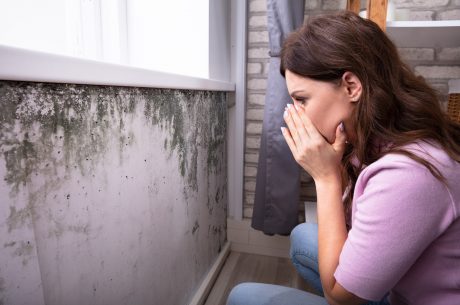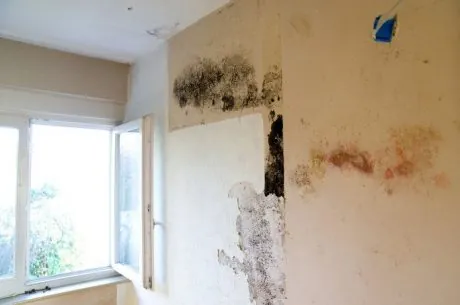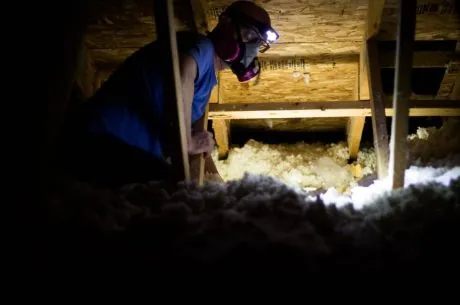No one wants mold in their home, so learning as much as you can about fungi can help you remove and prevent it from your home. Here are eight lesser-known mold facts to help you understand mold better and keep it at bay.
Mold Facts You Probably Didn’t Know
Mold is a common household nuisance that can pose health risks and cause property damage if left unchecked. Here are some lesser-known facts about mold that you may find surprising:
1. Mold Is Everywhere
Mold exists everywhere, having the vital role of helping organic matter decompose. Tiny mold spores are everywhere, too, including in your home. Many molds are harmless, but the problem arises when the spores start growing in moist areas of your home.
2. There Are Over 100,000 Different Types of Mold
There are over 100,000 known species of mold, most of which exist outside the home. Not all types of mold can make you sick, and some are even used in medicine. However, the mold species found in homes can be harmful. Common mold types found in buildings are Cladosporium, Aspergillus, Penicillium, Stachybotrys, and Alternaria.
3. Mold Can Grow on Many Surfaces
Mold thrives in moisture-prone areas, such as the bathroom or basement, but also in hidden areas like behind walls. Mold prefers organic or porous surfaces to grow on. While mold can’t grow on non-organic surfaces such as concrete, it may grow on dust or dirt layers on those surfaces.
4. Mold Starts Growing in 24 to 48 Hours
In the right conditions, mold can grow in as fast as 24-48 hours after a water damage event. The perfect conditions for mold growth are a food source (organic material like drywall), moisture, and an ideal temperature of 77 °F – 88 °F. Thus, water damage remediation is critical to preventing mold growth after a flood.
5. Painting Over Mold Doesn’t Remove It
It’s never a good idea to paint over a mold-infested surface. Mold will eat through the paint and reappear on the wall. Before applying a new coat of paint, you need to remove the mold completely. Choose a mold-resistant type of paint.
6. Mold Can Grow on Christmas Trees
Mold can also “decorate” your Christmas tree, growing under garlands and lights. All vegetation, including live Christmas trees, have mold spores on them. The warmth inside the home and moisture on the tree can trigger mold growth on its branches.
To avoid Christmas tree mold in your home, use artificial trees and decorations. If you prefer live trees, hose them down before bringing them inside to remove mold spores. Don’t keep the tree in your home for too long to prevent mold from developing.
7. Bleach Does Not Kill Mold
Many people use bleach to get rid of mold in their homes. The truth is that bleach kills live mold but not mold spores. What’s more, removing mold with bleach and water can make mold regrow even faster. To remove a small-scale (less than 10 square feet) mold infestation, use a mix of household detergent and water.
8. Insurance Policies Often Do Not Cover Mold
Most homeowners insurance policies cover mold damage only in certain situations. If mold arises after accidents like fire, lightning, or sudden water issues, then mold remediation is covered. However, you may not have coverage if the source of moisture that caused mold was due to neglected maintenance of the property.
9. Mold Comes in Many Colors
Mold can appear in various colors, including green, black, white, yellow, and orange. The color of mold does not necessarily indicate its toxicity or health risks, but certain types of mold, such as black mold (Stachybotrys chartarum), are known to produce toxins.
10. Mold Can Cause Health Problems
Exposure to mold can cause a range of health problems, including allergic reactions, respiratory issues, asthma exacerbation, sinus infections, and skin irritation. Individuals with compromised immune systems, allergies, or respiratory conditions are particularly vulnerable to mold-related health effects.
11. Hyphal Growth
Mold colonies consist of branching filaments called hyphae. These hyphae extend and branch out to form a network known as mycelium, which is the main body of the fungus responsible for nutrient absorption and growth.
12. Cellular Structure
Mold cells have unique cellular structures compared to plants or animals. They lack chlorophyll and cannot perform photosynthesis, relying instead on organic matter for nutrition. Mold cell walls are composed of chitin, a complex carbohydrate similar to what forms the exoskeletons of insects.
13. Ecological Importance
Mold plays a crucial role in ecosystems by breaking down organic matter and recycling nutrients. As decomposers, molds help to decompose dead plant and animal material, returning essential nutrients to the soil and facilitating nutrient cycling.
14. Toxin Production
Some molds produce secondary metabolites known as mycotoxins, which can be harmful to humans and animals if ingested or inhaled. Mycotoxins are produced as a defense mechanism against competing organisms and can have various adverse effects on health.
15. Medical Significance
One of the most interesting mold facts is that certain mold species can cause opportunistic infections in humans, particularly in individuals with weakened immune systems. Fungal infections, such as aspergillosis and candidiasis, can be life-threatening if left untreated.
16. Regular Inspections Are Essential
Regular inspections of your home for signs of water damage, water leaks, and mold growth are essential for early detection and prevention. Prompt action to address moisture issues can help prevent mold problems before they escalate.
For Mold Removal in Homes and Properties, COntact the PuroClean Professionals!
Understanding these facts about mold can help homeowners and occupants take proactive measures to prevent mold growth, safeguard their health, and protect their property from mold-related damage.
For more information about mold removal and prevention, check out 5 myths about mold debunked and how to tell if you have a mold problem in your home.
For mold removal and water damage repair services, contact your local PuroClean office.




